In memoriam: Herman Hamer
I’m saddened to report the news that Herman Hamer, former CEO of his family’s business, Florensis, passed away November 12 after a battle with cancer. He was just 60 years old.

Founded in 1941 as Hamer Bloemzaden by Herman's father, Jan, the company under Herman’s leadership went on to become one of the largest horticultural firms in Europe, with production in Holland, Portugal, Kenya and Ethiopia. Herman was a pioneer in the bedding plant plug business in Europe. He was also a long-time supporter of Fleuroselect (equivalent to All-America Selections in the U.S.) and served as its president for many years.
Anna Ball was a long-time friend of Herman’s and the two family businesses have a long, intertwined history. Herman was one of the first international interns at PanAmerican Seed, and eventually three of his five children also interned at Ball. In 2009, Ball and Florensis formed a partnership, with Florensis buying Ball’s Dutch and German operations, and in exchange, Ball taking over Florensis’ UK operation. Ball also gained a minority share in Florensis. More recently, the two companies started a breeding company called Toscana. Said Anna in a note to Ball employees, “Herman was a smart, determined, strategic man who always took the long view. He will be sorely missed.”
Long-time Florensis manager Leo Hoogendoorn was appointed CEO of the company earlier this year. He spoke about Herman at a company memorial, saying that Herman had great confidence that the company would carry on well without his leadership. He joked frequently, “The less I interfere, the better things run here.”
“He would then laugh heartily at his own expense,” Leo said. “He had no shortage of self-deprecating humor and self-knowledge.”
Added Leo with respect, “Despite all his business successes, Herman remained who he was, accessible and without airs and graces. Playing the big boss towards employees was never his thing. Herman was very modest and loved to see the people around him progress.”

Black Friday ad sneak peek
If you’re in the market for tools or appliances, Black Friday is your day. At least at Lowe’s, where about 28 of their 33-page Black Friday ad flyer will be devoted to those two categories.
As for poinsettias at Lowe’s, I found two advertised: a 2-quart for $6.98 and a 1.5-gallon poinsettia and foliage planter for $15.98. No 99-cent specials evident anywhere. (As to how big—or small—a 2-quart poinsettia is, I have no idea. Nor will consumers, which maybe is a good thing: They won’t be able to comparison shop.)
At Walmart, it’s toys and consumer electronics. No poinsettias or even Christmas trees featured in their Black Friday ad. But I'm told Walmart never advertises Black Friday poinsettias. And as for Home Depot, I couldn’t find a leaked version of their flyer, so I don’t know what they’re planning.
That said, my experts in the field assure me there will be 99-cent poinsettias out there on Black Friday at all three of the big boxes. How many is the big question. They’re always first-come, first-serve, and run out quickly. And the hurricanes could have led to some shortages. In the end, I don’t think 99-cent poinsettias are anything to worry or fret about. Either you’re in that business and you deal with it, or you compete against that business by growing great plants and selling them to customers who appreciate—and will pay for—quality.

When you look at your poinsettias, do you see spots?
Not from staring at red for so long. I mean real spots. Like these:
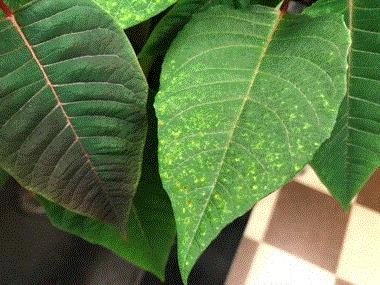
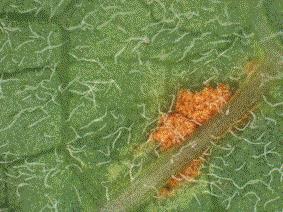
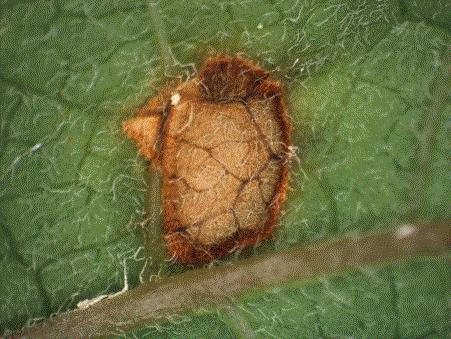
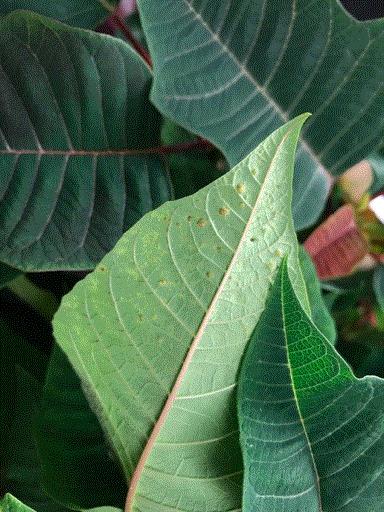
These photos come from the webinar I hosted Tuesday with Dr. Janna Beckerman of Purdue University on the topic of common diseases and the fungicides that work on them. Her very last item was about some mysterious spots that have been showing up on poinsettias this fall.
“The symptoms vary from diseases that resemble rust, to classic scab or bacterial leaf spot, or even possibly virus. We’re not seeing them on any one variety and we’re not able to identify any pathogens associated with it. We just have these mystery spots for 2017."
She added that they’re not geographic or associated with the use of any specific chemical products. “We’ve done every sort of trace back and trace forward … there’s just some poinsettia weirdness going on."
The strange symptoms don’t seem to be appearing in significant numbers. As for what to do if you spot it, Janna suggest pruning out affected foliage. And you can contact her about sending samples in, if you find it. Email her at janna@purdue.edu.
Speaking of that webinar, it's archived! If you missed the live version, despair not. You can catch the archive; it’s hosted at www.growertalks.com/webinars.

IPM Essen’s new site plan
Those of you who attend IPM Essen in late January know that the Messe Essen where the show is held has been undergoing an expansion and renovation, and that messed up some of the show halls last year. This year, you’ll still find things a bit different than you’ve come to expect. I’ve got a map of the 2018 event right here:
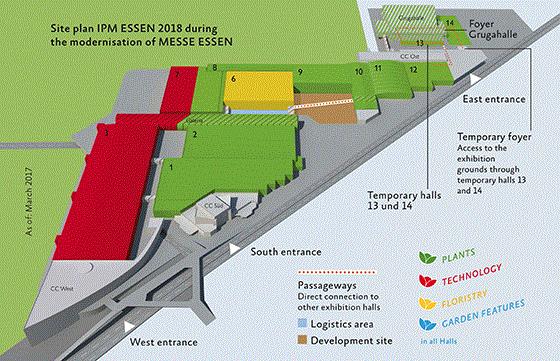
What’s changed?
First, you’ll note that Hall 5 has vanished. It used to be to the right of the Galleria, just below that brown patch, and was the home to about 100 Danish exhibitors. They will move to the temporary Hall 14 and the Foyer at the top right of the map. They are a must-see, so that will drag visitors up to that end of the Messe.
Where you see Hall 9 … well, that one is being completely refurbished and will be renamed Hall 6, and that’s where you will find the Polish and Spanish stands.
You’ll also note that Hall 4 is gone. It was where that blue space is in the middle of the map. The current Hall 6, in yellow, will remain the floristry hall.
The Italian Hall is no more
Hall 6 had been the Italian Hall, and a favorite spot for weary travelers looking for a glass of Sangiovese and a bit of parmigiana. The Italians have decided for 2018 to exhibit separately, depending upon the category of product they’re selling. For 2019, they’ll have the option to exhibit together once again (although I’m not sure where).
Way out in hall 13, I’m told that they’ll be showing ideas and high-volume sales concepts for garden centers (you know I’ll be checking that out for Green Profit).
Anyway, that’s a roundup of the major changes to IPM Essen. Regardless of where folks are located, it’s a fantastic show, and if you’ve never been, you need to put it on your flower bucket list.
OHP's new bio insecticide
This week, OHP announced the addition of Thuricide N/G Biological Insecticide to its portfolio of biosolutions. Thuricide N/G is derived from the naturally occurring bacteria Bacillus thuringiensis subspecies kurstaki strain SA-12. It’s highly effective at infecting and controlling lepidopteran and other insect larvae.
After application, the larvae consume the bacteria and cryotoxins are released into the stomach, causing the larvae to stop feeding within a few hours and consequently death occurs within a few days. Sounds nasty! I love it!
Thuricide N/G is approved for organic production, OMRI listed, carries a four-hour Restricted Entry Interval (REI) and a Caution signal word.
Click HERE for more information on Thuricide N/G biological insecticide.
Koppert’s new nematode formulation
Dutch biocontrol experts Koppert Biological Systems have found a way to increase the life of its nematodes while ensuring that no visible residue is left on your crop. The new nematode formulation utilizes a gel instead of a clay matrix, which they say can lengthen the shelf life of the nematodes by up to 16 weeks. Koppert says it’s because the nematodes expend less energy while in hibernation in the gel than in clay. “When used on time, they are more energetic to do the job they were made for,” says product manager Tim Bossinga.
The new formulation launched at IFTF—the International Flower Trade Fair held recently near Amsterdam.
Nematodes—microscopic worms that penetrate and kill a wide range of pest insects—are increasingly used for the biological control of vine weevils, sciarid flies, thrips, mushroom flies, shore flies, asparagus beetles, leatherjackets and a host of other pests.
For more, contact Koppert at www.koppertonline.com.
Makoto Azuma’s interesting arrangements
I enjoy CBS Sunday Morning for the eclectic mix of stories they tell. This past Sunday, our product was featured in a piece on Tokyo floral designer Makoto Azuma. I don’t know why I’ve never heard of him—he’s actually sent a bonsai tree and a flower arrangement to the edge of space via balloon and photographed them (a project he called Exobiotanica). He’s also sent flowers 3,000 ft. deep into the ocean. And he’s got these bottles of flowers he creates … stunning!
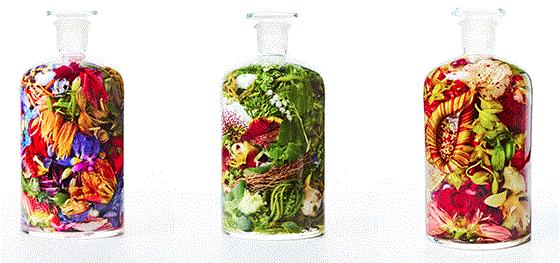
Check out the CBS video HERE.
The Plant Life Balance app
My friends at Pohlmans Nurseries in Australia clued me into a new plant app called Plant Life Balance that lets the user plug in a picture of their home space (a room, patio or portion of yard). The app will rate the “healthiness” of the room, and if the rating is low, the user can visualize it filled with plants. The app offers seven differen plant “looks”—including children, jungle, food, desert and formal. It provides advice on varieties and where to buy them.
The project was funded by Horticultural Innovation Australia, a grower-owned, not-for-profit R&D corporation.
The cool thing is, Plant Life Balance isn’t just about aesthetics; the app and website explain the health and well-being benefits of plants in some detail, including how many plants it takes to clean a given space of volatile organic compounds (VOCs). Read more here: www.plantlifebalance.com.au, http://horticulture.com.au
Digital Vegetables
All the cool, weird stuff seems to happen in Tokyo: Dr. Steve Newman from Colorado turned his Facebook followers on to this wild greenhouse that has popped up in Tokyo, called Digital Vegetables.
Developed by the marketing firm studio PARTY, it’s designed to spark conversations about agriculture. It’s actually a simple gothic-style freestanding greenhouse that’s been strung with thousands of colorful computer-controlled LED lights. Inside are growing seven different kinds of vegetables, and when visitors touch the plants, they trigger an awesome display of lights and sounds.
You’ve got to see it in action to really appreciate it, so check out this VIDEO:
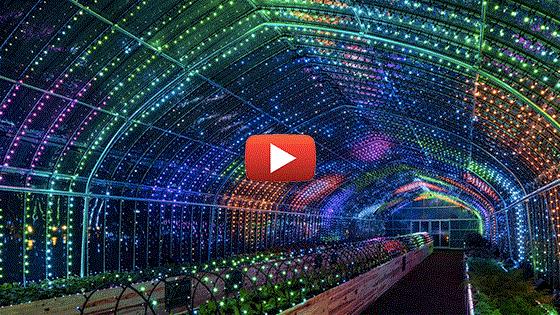
Unfortunately, it was only on display until November 5.
Finally ...
Where’s Chris this time? Jen Zurko and I are making the drive down to the St. Louis area for a few garden center visits, and then on Thursday, the poinsettia trial of Millstadt Young Plants and N.G. Heimos Greenhouses. We're planning a video of the latest cultivars from all the breeders in attendance, so stay tuned for that next time.
See you then,

Chris Beytes
Editor
GrowerTalks and Green Profit
This e-mail received by 22,206 loyal readers!
Thanks to my loyal sponsors, who help me reach the 22,206 readers of Acres Online in 66 countries! Want to be one (a sponsor, that is)? Give Paul Black a shout and he'll hook you up.